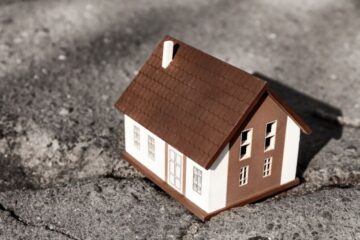How to Prepare For Extreme Heat

Extreme heat is defined as several weeks during which the temperatures are 10°F above average for the region. Heat is especially dangerous to:
- Young children
- The elderly
- People who are ill
- People who are overweight
Heat waves affect the South and West the most, but they can hit all parts of the nation, resulting in wildfires, drought, heat-related illnesses, and power outages.
How to Prepare For Extreme Heat
First, get to know common heat-related terms:
- Heat wave: Technically speaking, 48 hours of temperatures that are higher than 90°F, combined with more than 80% relative humidity.
- Heat index: A relative temperature that conveys how hot it feels with the heat and humidity factored in. Exposure to full sunshine can increase the heat index by 15°F.
- Heat cramps: Often the first sign of a heat-related illness; characterized by muscular pains and spasms, usually in the abdomen or legs.
- Heat exhaustion: A symptom that occurs when body fluids are lost through heavy sweating, usually due to overexertion during hot, humid weather. Blood flow to the skin increases, causing a decrease in blood flow to the vital organs. The body enters mild shock that will lead to heat stroke unless treated immediately.
- Heat stroke/sunstroke: A failure of the body’s cooling system, often indicated by the fact that the victim has stopped sweating. If the body is not cooled quickly, brain damage or death could occur.
To prepare your home for extreme heat, it’s important to follow these guidelines:
- Have air conditioners, fans, and ice on hand.
- Make sure that air conditioners are installed properly. They should fit snugly in the window or wall. Insulate any gaps that would allow cool air to seep out.
- Use shades, curtains, or blinds to cover windows that receive full sun.
- Consider installing outdoor awnings or louvers (slatted panels). They can reduce heat in the home by 80%.
- Keep storm windows installed all year.
- Weatherstrip doors and windows to keep cool air in and hot air out.
How to Endure a Period of Extreme Heat
Here are some ways to cope and keep cool in extreme heat:
- Stay inside during the sun’s hottest hours: If you want to do an outdoor activity, take frequent breaks, or just wait until the sun starts to go down.
- Stay on the lowest level of the house: Heat rises, so the lower the better.
- Drink a lot of water: If you’re sweating, it means you’re losing important bodily fluids. Dehydration can lead to heat exhaustion or heat stroke.
- Dress appropriately: Wear loose, lightweight clothing and, if you’re outside, a wide-brimmed hat.
- Use sunscreen: Sunburns are uncomfortable and can have lasting effects—they contribute to aging and are a major risk factor for skin cancer.
- Go to air-conditioned public places during the hottest part of the day: From 11 a.m. to 2 p.m. or so, you might want to go to the movies or a shopping mall.
- Eat light, and don’t drink alcohol: A cold beer might taste great on a hot day, but don’t overdo it. Avoid high-protein food, which increases metabolic heat in the body.
- Check on relatives, friends, and neighbors: Anyone who doesn’t have air conditioning and spends much of their time alone is at risk for a heat-related illness.
- Conserve electricity: A rolling blackout occurs when the power company shuts off power deliberately to keep the entire electricity grid from overloading. Rolling blackouts are often imposed during heat waves because excessive use of air conditioners stresses the power grids. So follow these energy-conservation tips:
- Set your thermostat no lower than 78°F when you’re home. Turn off individual AC units or raise whole-house systems to a higher temperature when you’re out.
- Switch to compact fluorescent light bulbs—they use less energy and generate less heat than regular incandescent bulbs.
- Use major heat-generating appliances only early in the day or late at night.
- Turn off all unnecessary lights and appliances when not in use.
Heat-Related Illnesses
Most heat related illnesses are a result of overexertion and overexposure to the sun. The first step is to recognize the symptoms, and the second is to address the problem.
|
Condition
|
Symptoms
|
What to Do
|
||
|
Heat cramps
|
Painful muscular spasms, usually in the legs or abdomen, accompanied by heavy sweating.
|
Stop, move out of the sun, and rest. Sip small amounts of water. Stretch and massage the cramping muscles lightly.
|
||
|
Heat exhaustion
|
Heavy sweating with cool, moist, pale, or flushed skin. Possible dizziness, nausea, weakness, or exhaustion. Body temperature may be normal and skin may not feel hot.
|
Lie down in a cool place and fan. Loosen or remove tight clothing and apply cool, wet cloths. If conscious, sip water slowly (a half-glass every 15 minutes). Seek medical attention if vomiting or loss of consciousness occurs.
|
||
|
Heat stroke
|
High body temperature (as high as 105°F). Hot, red, dry skin. Rapid, weak pulse and rapid, shallow breathing. In severe cases, vomiting, confusion, or complete unconsciousness.
|
Call 911 and go directly to the hospital. Move to a cooler location. Remove clothing and bathe in cool water or wrap body in cool, wet sheets. Watch for breathing problems. Place ice packs on the wrists, ankles, armpits, and neck.
|


